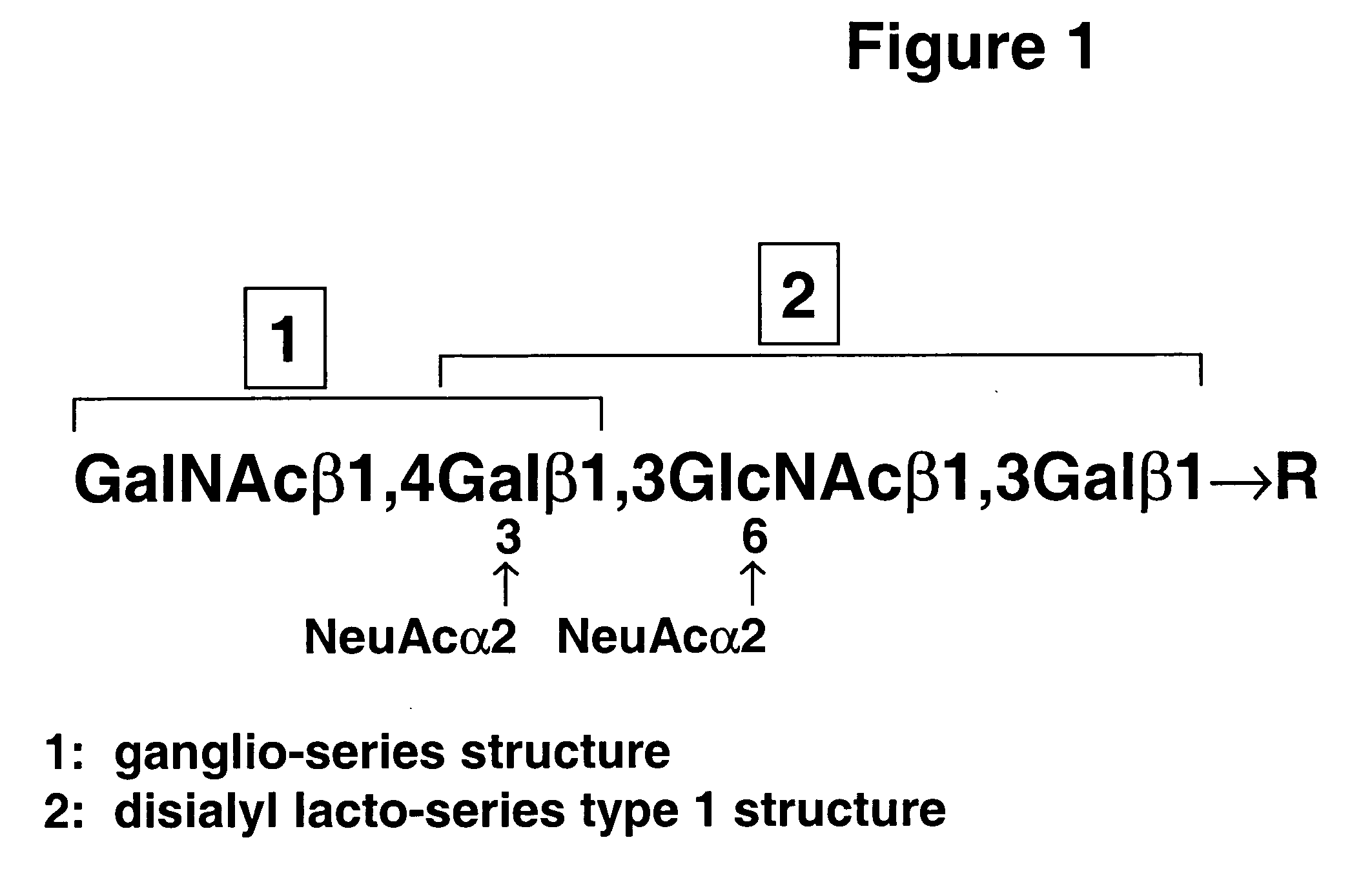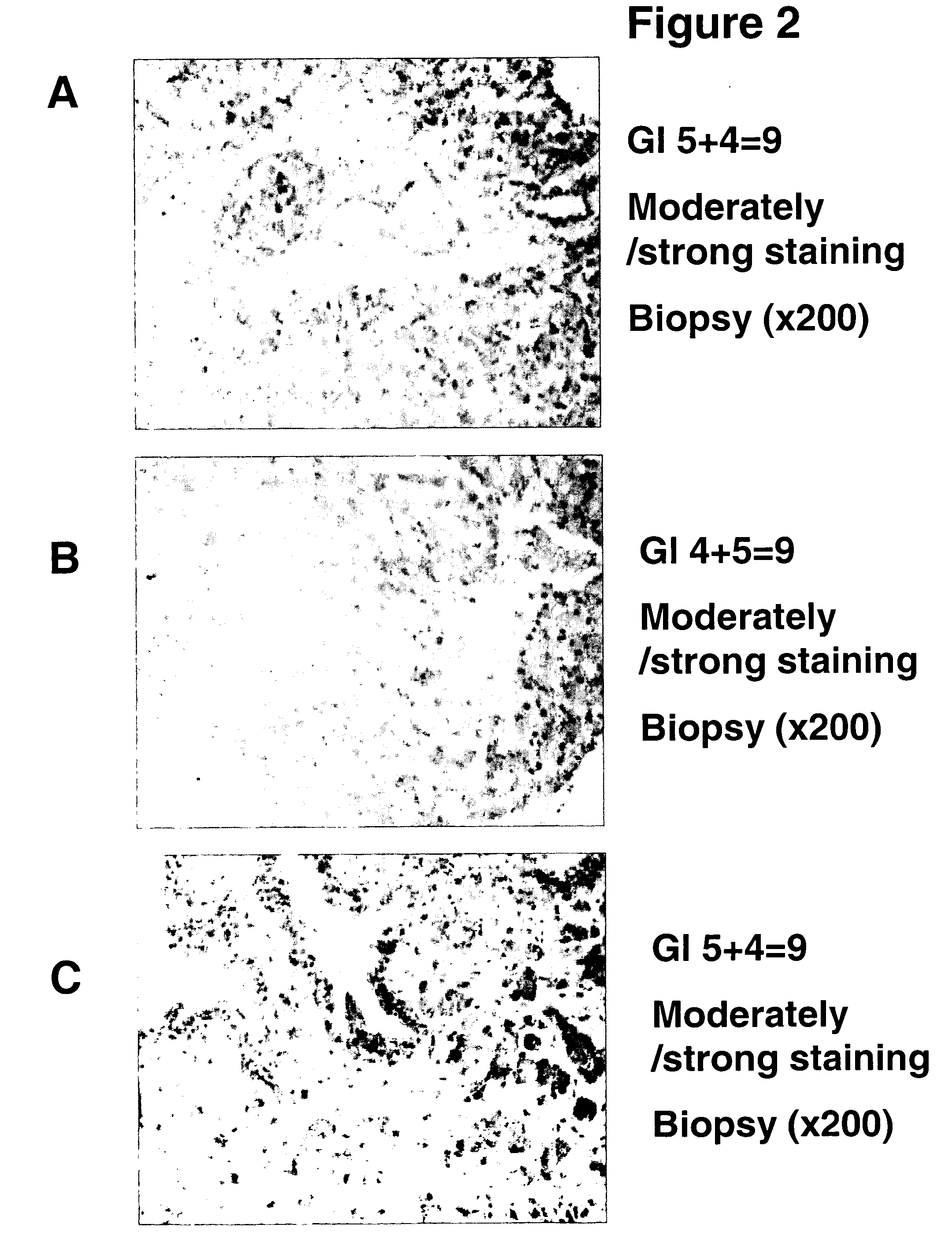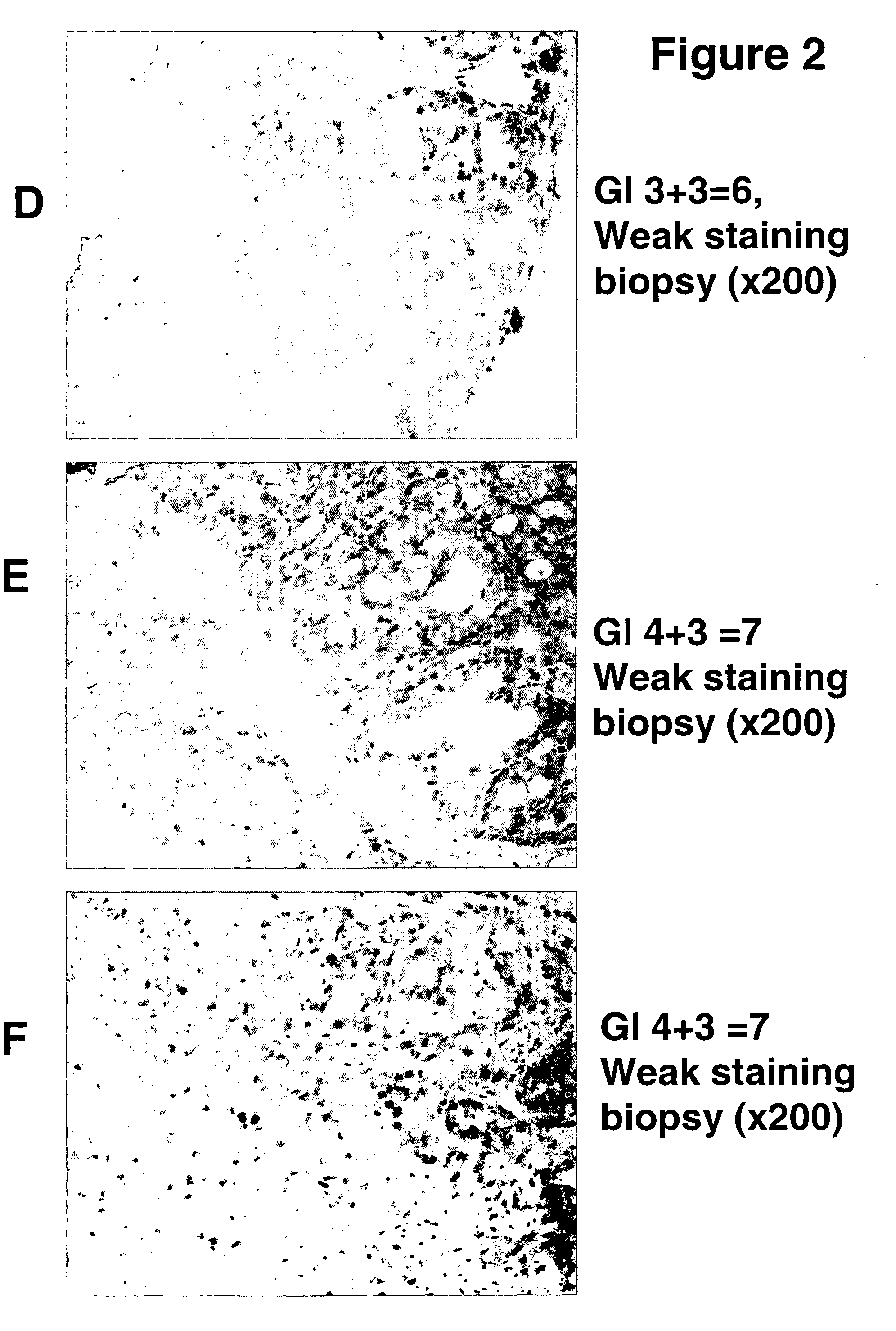RM2 antigen (beta1,4-GalNAc-disialyl-Lc4) as prostate cancer-associated antigen
a prostate cancer and antigen technology, applied in the field of identification, can solve the problems huge and use of this test worldwide, and achieve the effects of psychological stress on patients, waste of money, time and labor
- Summary
- Abstract
- Description
- Claims
- Application Information
AI Technical Summary
Benefits of technology
Problems solved by technology
Method used
Image
Examples
Embodiment Construction
[0020] A. RM2 antigen and antibodies. Based on the general concept that human tumors are characterized by expression of specific carbohydrate antigens, bound either to glycosphingolipid or to glycoprotein (Hakomori, S. 1989 Adv. Cancer Res. 52, 257-331; Hakomori, S. 1996 Cancer Res. 56, 5309-5318), the presence of slow-migrating gangliosides highly expressed in RCC was demonstrated (Saito, S., Orikasa, S., Ohyama, C., Satoh, M., and Fukushi, Y. (1991) Int. J. Cancer 49, 329-334). Monoclonal antibody RM2 was established by immunization of mice with RCC cell line TOS 1, followed by repeated cloning of hybridoma secreting antibody that recognized slow-migrating gangliosides expressed in RCC tissue (Saito, S., Levery, S. B., Salyan, M. E. K., Goldberg, R. I., and Hakomori, S. 1994 J. Biol. Chem. 269, 5644-5652). Further systematic studies on the structure of the antigen recognized by mAb RM2, termed “RM2 antigen,” by 1- and 2-dimensional 1H-NMR and mass spectrometry clarified it as β1,4...
PUM
| Property | Measurement | Unit |
|---|---|---|
| SPR) spectroscopy | aaaaa | aaaaa |
| molecular force microscopy | aaaaa | aaaaa |
| surface plasma resonance | aaaaa | aaaaa |
Abstract
Description
Claims
Application Information
 Login to View More
Login to View More - R&D
- Intellectual Property
- Life Sciences
- Materials
- Tech Scout
- Unparalleled Data Quality
- Higher Quality Content
- 60% Fewer Hallucinations
Browse by: Latest US Patents, China's latest patents, Technical Efficacy Thesaurus, Application Domain, Technology Topic, Popular Technical Reports.
© 2025 PatSnap. All rights reserved.Legal|Privacy policy|Modern Slavery Act Transparency Statement|Sitemap|About US| Contact US: help@patsnap.com



